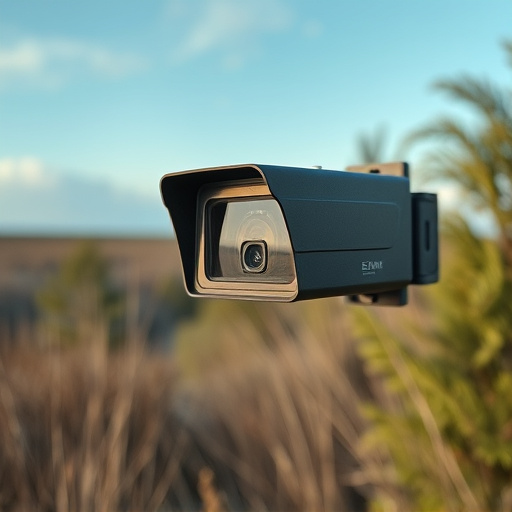Detecting Battery Powered Covert Nanny Cameras requires advanced tools like EMF detectors to identify unique electromagnetic signals. Scrutinizing common placement areas and staying updated on camera signatures are key for prevention. Techniques include RF signature scanning and directional antennas, but metal detectors and scanners may yield false results. Understanding modern surveillance technologies is vital for accurate detection.
Uncover hidden threats with our comprehensive guide to detecting battery-powered covert nanny cameras. In today’s digital age, privacy concerns are paramount. Learn to navigate the electromagnetic landscape and identify signals from these discreet devices. From understanding basic signal principles to advanced detection techniques, this article equips you with practical tips for spotting hidden cameras. Dispel common misconceptions and become a surveillance device detection expert.
- Understanding Electromagnetic Signals from Battery Cameras
- Practical Tips for Detecting Covert Nanny Camera Signals
- Advanced Techniques to Spot Hidden Battery-Powered Devices
- Common Misconceptions About Surveillance Device Detection
Understanding Electromagnetic Signals from Battery Cameras
Battery-powered covert nanny cameras, also known as hidden surveillance devices, operate by transmitting and receiving electromagnetic signals for communication and data transfer. Understanding these signals is crucial when setting up or detecting such cameras, especially in sensitive environments like homes or offices. Electromagnetic signals from battery cameras can be subtle but detectable using specialized equipment. These signals often fall within the low-frequency range, making them different from radio frequencies used by typical consumer electronics.
Detecting these signals requires knowledge of their unique characteristics. Battery-powered cameras typically emit bursts of data at regular intervals, which can be identified by their specific patterns and power levels. By learning to recognize these electromagnetic signatures, individuals can take proactive measures to ensure privacy and security. This includes using signal detectors or analyzing existing network traffic for unusual activity related to unknown devices.
Practical Tips for Detecting Covert Nanny Camera Signals
Detecting covert nanny camera signals, especially from battery-powered devices, requires a meticulous and strategic approach. One effective method is to utilize electromagnetic field (EMF) detectors designed for identifying hidden cameras. These tools can pick up on the unique EMF emissions of many modern surveillance devices, including those used by nannies to secretly monitor their charges. By scanning through different frequencies, you can uncover hidden signals that may be emanating from tiny, battery-powered covert cameras.
Additionally, it’s crucial to inspect common placement areas for such devices, such as wall sockets, light switches, and ceiling fans, which often serve as housing or signal transmission points. Checking for any unusual electrical activity or faint lights in these areas could indicate the presence of a covert nanny camera. Regularly updating EMF detection technology and staying informed about the latest camera models’ electromagnetic signatures is also essential for effective monitoring.
Advanced Techniques to Spot Hidden Battery-Powered Devices
In the realm of detecting hidden battery-powered covert nanny cameras, advanced techniques are pivotal. One effective method involves utilizing electromagnetic signal detectors (ESDs) that can pick up on the unique emissions from these devices. These instruments are designed to detect even minimal electromagnetic fields, making them invaluable in identifying hidden cameras and tracking their signals.
By employing ESDs, professionals can scan for suspicious radio frequency (RF) signatures, which are often characteristic of battery-powered gadgets. This approach is especially useful in navigating the labyrinthine world of covert surveillance equipment. Moreover, combining ESDs with directional antennas enhances precision, allowing experts to pinpoint the exact location of hidden cameras, ensuring a thorough and effective search in various settings, from homes to offices.
Common Misconceptions About Surveillance Device Detection
Many people believe that detecting hidden surveillance devices, particularly battery-powered covert nanny cameras, is as simple as using a metal detector or a specialized digital scanner. However, this common misconception often leads to false positives and negatives. Metal detectors are ineffective against non-metallic components commonly found in modern surveillance equipment, such as plastic and circuit boards. While some advanced scanners can identify electromagnetic signals, they may not be able to penetrate solid objects like walls or detect devices hidden inside everyday items.
Another misunderstanding is that every signal detected is a surveillance device. Many everyday electronics emit low-level electromagnetic radiation, which can be mistaken for covert camera signals. To avoid these pitfalls, it’s crucial to have a thorough understanding of common surveillance device features and the latest detection technologies. This includes knowing the types of signals to look for, such as those from infrared sensors or wireless data transmission, and being able to differentiate them from natural electromagnetic emissions.
In the pursuit of privacy and security awareness, understanding and detecting covert battery-powered nanny cameras has become a valuable skill. By familiarizing yourself with electromagnetic signal patterns and employing advanced techniques discussed in this article, you can navigate the intricate landscape of surveillance device detection. Remember that staying proactive and informed is key to safeguarding your personal spaces from unwanted intrusions, ensuring peace of mind in an era where covert devices can be easily hidden.
